Follow 👆 the public account and reply with 'python' to get the beginner's tutorial! Source from the internet, please delete if infringing.Python literally means “snake” in English. It wasn’t until 1989 when a Dutchman named Guido van Rossum (abbreviated as Guido) invented an object-oriented interpreted programming language (which will be introduced later) and named it Python, that it acquired the meaning of a programming language.
【The method of obtaining it is at the end of the article!!】
Speaking of Python, its birth is quite dramatic. According to Guido’s own account, the Python language was developed by him during Christmas time to pass the time. The reason he chose Python as the name for this programming language is that he is a loyal fan of a comedy group called Monty Python.
Although Python seems to have been developed “incidentally,” it is by no means inferior to other programming languages. Since the first public release of Python in 1991, its usage has seen linear growth since 2004, continuously being welcomed and loved by programmers. In 2010, Python won the TIOBE Language of the Year award; in 2017, it ranked first in the programming language ranking released by IEEE Spectrum. As of now (August 2021), according to the TIOBE rankings, Python remains in the top three and is showing a trend of continued improvement (as shown in Table 2).
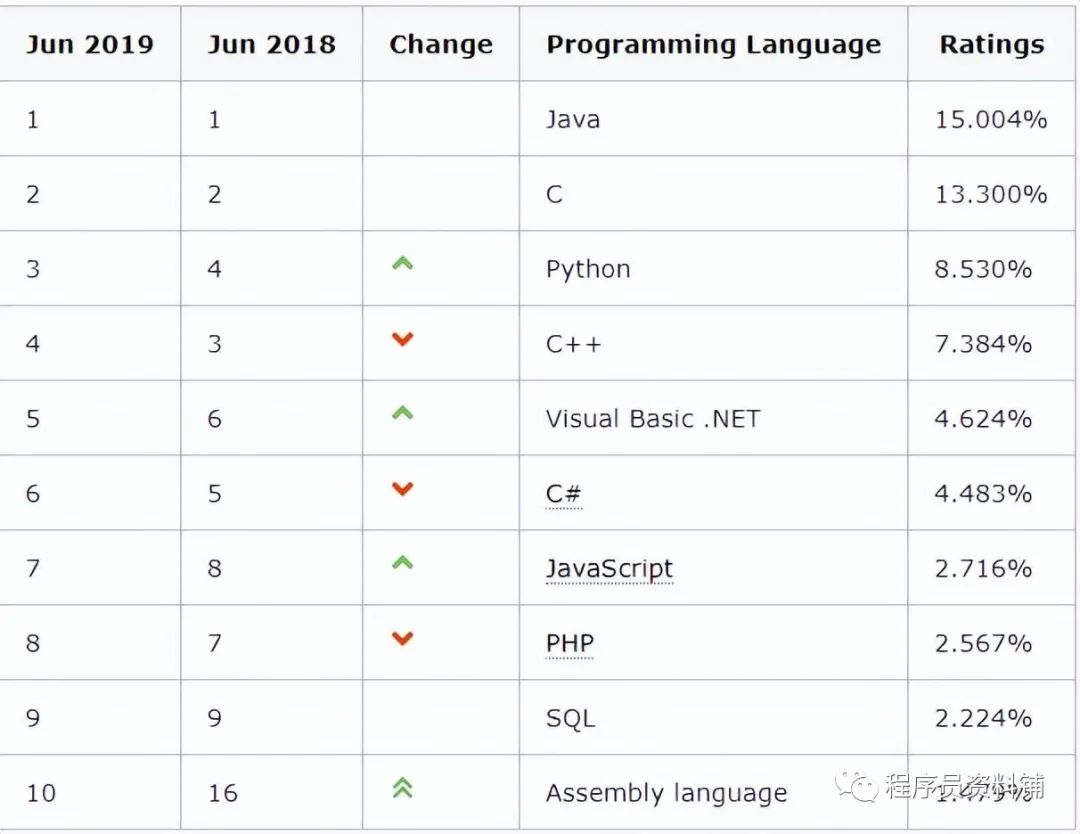
I switched to learning Python at the age of 25. To be honest, I switched careers primarily to earn more money. I hope my experience can inspire and provide some reference for friends who want to switch careers.
Let me briefly introduce my background: I graduated from a third-tier university with a major in logistics, my learning ability is average, and I have no special skills; I am just an ordinary person! After working for 4 years and saving 7000, I felt hopeless about life and decided to switch careers directly.
Why do I say self-learning Python? Generally, I would advise most people against it! Because I am not an ordinary person.
First, let me talk about my understanding of the programming language Python. Python is a cross-platform language with very concise syntax, allowing shorter code to accomplish more tasks. Additionally, it is a scripting language, enabling you to write a script anywhere at any time to process data, which is very convenient. It is also an object-oriented language, making it very friendly for beginners. Python has a rich library for handling various fields, including web scraping, machine learning, data processing, image processing, etc., meeting the needs of most domains.
I was a complete novice with no foundation, so the learning process was very painful. At first, I bought some IT-related books online, but without a foundation, I found them difficult to understand. So I looked for tutorials online, but they were not systematic, and during that initial period, I doubted whether I could learn it and whether I should give up.
Although I had thoughts of self-doubt at that time, I really didn’t want to continue living a low-paying, labor-intensive life without a future. The inner voice longing for change spurred me to persevere. At that time, I joined many IT groups to learn, met a lot of friends, and they suggested I learn Python. Compared to Java, C++, and .NET, Python is easier to master, has a simple entry point, and its application directions are very diverse. After listening to their advice, I regained my confidence.
After a few months of persistence, I studied almost until 1 or 2 am every day, maintaining an average of over 5 hours of study time per day, from theory to practice. Whenever I encountered problems, I would consult the experts in the group. Through learning, I roughly mastered Python, learned SQL, understood a bit of Linux, and could do simple web scraping and algorithms. Although I can’t compare to the experts, I am still very happy; finding a Python-related job should not be a problem.
How to Systematically Self-Study Python?
Step 1: Identify Your Motivation for Learning Python
Before starting to learn Python online, ask yourself why you want to learn it. This is because it will be a long and painful process. Without sufficient motivation, you may not be able to persist until the end.
Understanding your motivation helps you clarify your ultimate goal and find a learning path that is easy and interesting. When preparing to learn Python, you don’t need to have a specific project; an area of interest is sufficient. For example:
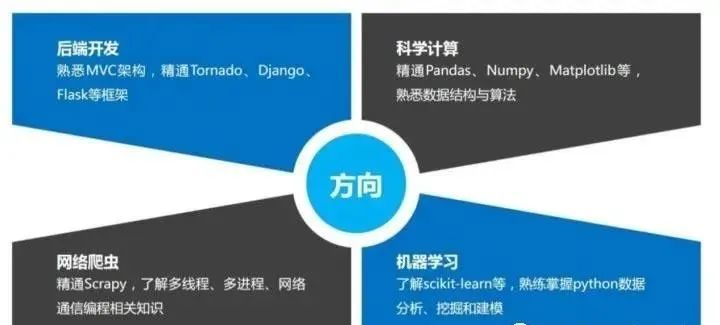
For students who have never been exposed to Python, I have prepared a detailed learning growth roadmap for you. It can be said to be the most scientific and systematic learning path, and everyone following this general direction will have no problem learning.
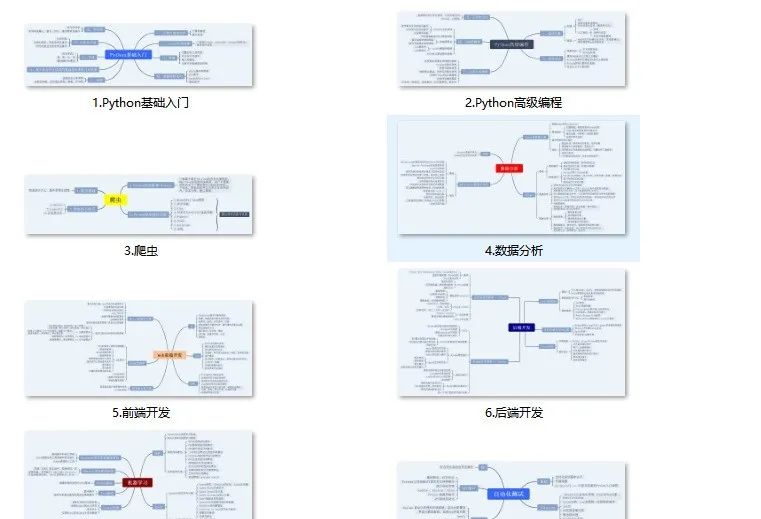
The materials have been uploaded; those who need them can obtain them below!
Step 2: Learn Basic Syntax
Unfortunately, this step cannot be skipped. It is necessary to learn the basics of Python syntax before delving into your area of interest. But you don’t need to spend too much time because you can practice repeatedly in real situations.
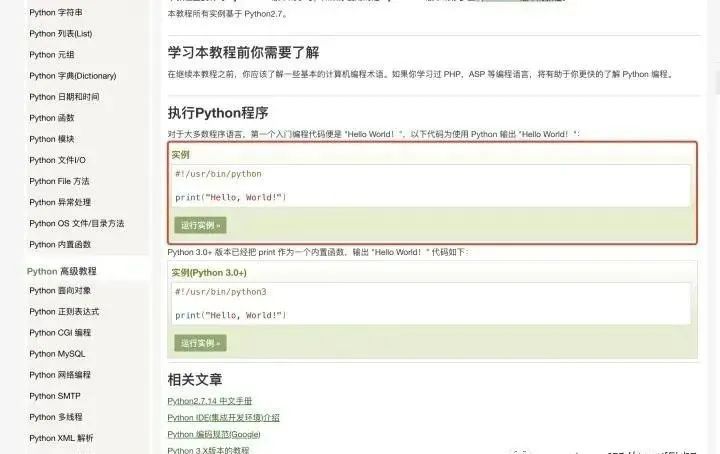
The red box contains the simplest Python program.
print("Hello, World!")You can copy and paste this code, and then follow the steps below to run it. If successful, the output will appear below.

After completing this step, you need to type it out by hand; do not copy and paste anymore, because typing it out may reveal many issues.
For example, this error

It may look similar, but the correct parentheses should be English parentheses; if you type in Chinese parentheses, it will throw an error.
Similarly, ! and ! are also different, and many students get stuck on these details.
Suggestion: After completing the beginner tutorial, you can skip the advanced tutorial for now, but the mark of completion is that you type it all out by hand, rather than copying-pasting-running, which is useless!
At the same time, I have also organized the basic syntax for Python beginners, which can save you a lot of time.

Complete PDF E-Book
The benefit of books lies in their authority and systematic structure. When you first start learning, you can only watch videos or listen to someone teach, but after you feel you have mastered it, it is recommended to still look at books. Reading authoritative technical books is a necessary path for every programmer.
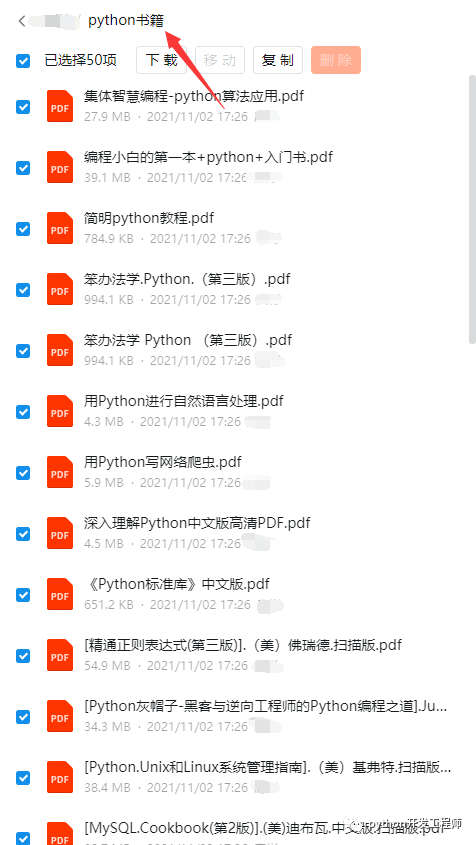
If you want to get started with Python, I have prepared a: 282G comprehensive Python resource package available for free!
Conclusion
For students who have already embarked on the path of career change, do not pay attention to various comments online; please walk firmly on. Considering those negative messages and emotions will not help your current situation at all. At this time, we can only think about how to solve each problem and what we are lacking. If the environment is poor and job positions are scarce, consider what advantages those who have found jobs possess and how you can make up for them, rather than complaining about the larger environment. Accepting reality and striving to adapt is the only way to improve the situation.
Finally, let me share a viewpoint I saw on Zhihu: Many people are anxious about the industry’s winter. As Littlefinger said in “Game of Thrones”: Chaos is not a pit,chaos is a ladder.
How to Obtain:
-
Like + See Again
-
Reply in the public account: “python”
Get the latest Python zero-based learning materials for 2024,reply in the background:Python